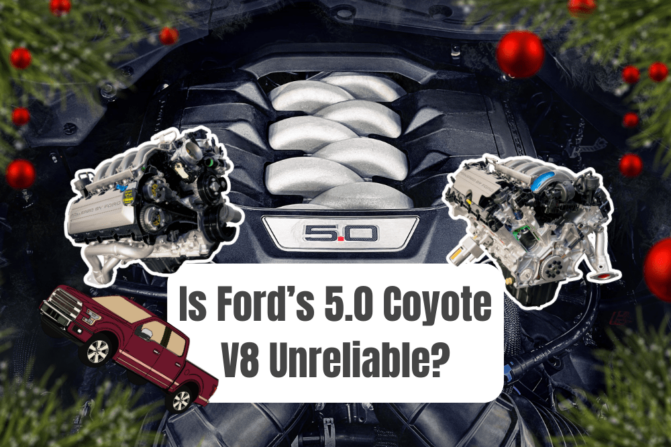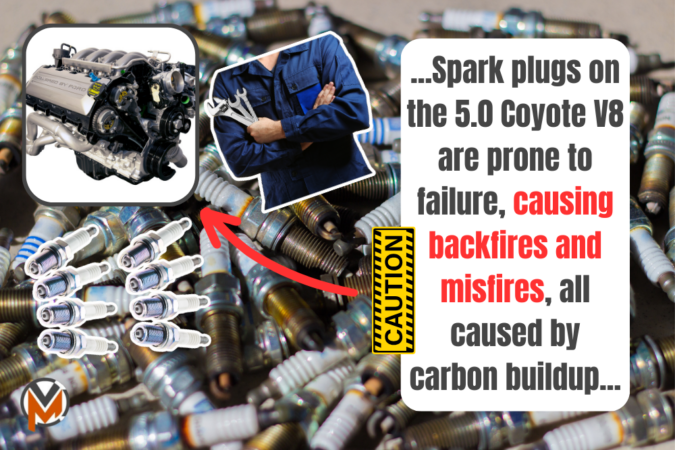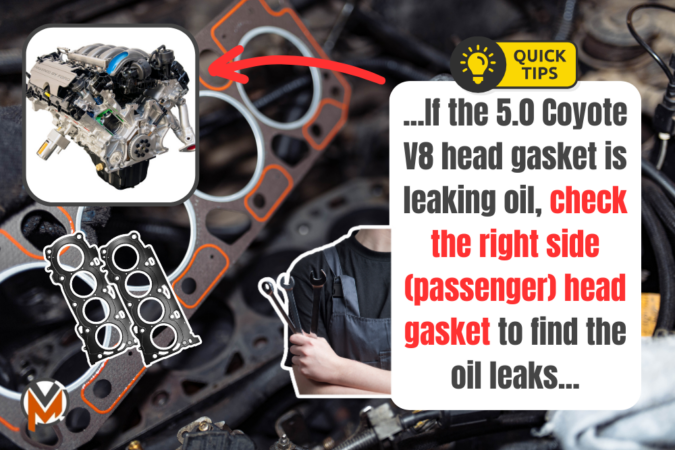For literally decades, the Ford F150 has crowned itself the king of pickup trucks. To cater to as wide of an audience as possible, the F150 came with numerous engine options, including one of its most iconic pairings, the 5.0-liter Coyote V8. Nonetheless, while many love the rawness of a good ol’ V8 under the hood, the Ford F150 and its 5.0 V8 engine are plagued with problems.
While it’s no lemon, Ford’s 5.0 Coyote V8 is known to suffer problems such as rattling noises and rough running, as well as faulty spark plugs. Moreover, these are compounded by other faults like coolant leaks, head gasket oil leaks, throttle body issues, stalling, and engine knocking… Among others. However, are these problems really that bad?
Problems With The Ford F-150’s 5.0L Coyote V8 Engine
To get a better idea of how reliable (or, unreliable) the Ford F150 5.0 engine is with all its problems, here are some of the most common issues you might encounter:
1. Rattling Noises From The Timing Chain
No one wants to hear their engines make a weird noise, as it always leads to an expensive repair bill. For some unlucky F150 owners, this was the reality. The 5.0 V8 engine in the Ford F150 affected by this problem made scratching, ticking, and rattling noises as the engine got up to operating temperature. You might also notice poor or reduced engine performance.
If these noises go on for a prolonged period of time, these issues can end up causing the engine to file out of time by loosening the tension on the timing chain. To fix this problem, almost all of the timing chain assembly has to be disassembled. Expect a repair bill of around $2,000 to get that work done. You could DIY this repair to save money, but it’ll be tough.
2. Rough Running Due To MAF Sensor Problems
Due to an issue with the Mass Air-Flow sensor (MAF), the F150’s 5.0 engine can start to run rough once the vehicle reaches the 100,000-mile mark. The sensor failing due to it getting dirty or accumulation of dirt is the main cause of this issue. In addition to rough running, it also tends to backfire, misfire, shake when idling, and hesitate under acceleration.
To remedy the rough-running engine, there are two possible solutions. The first one is to clean the MAF sensor using an electronic cleaner (you can get the cleaner for just $10). The other, more expensive option is to replace the sensor entirely (if the first option doesn’t work). You can either pay a shop around $165 to $250 to do it or do it at home for around $100.
3. Faulty Spark Plugs Causing Misfires And Backfires
Bad spark plugs are behind some of the most widespread Ford F150 5.0 Coyote V8 engine problems. In fact, these are the main culprits of the engine misfires and backfires encountered by a majority of F150 owners. Additionally, these faulty spark plugs also cause the engine to falter when accelerating, in addition to a noticeable reduction in fuel efficiency.
A part of the underlying reason why these spark plugs fail often is due to the build-up of carbon deposits on the spark plug electrodes. Fixing this is as easy as replacing the spark plugs, which often goes for $30 to $60 for a new set of quality spark plugs. If you’re getting a shop to replace it for you instead, it ought to cost you $100 to $200, including labor costs.
4. Coolant Leaks Due To A Faulty Connector
Another common 5.0 Coyote V8 engine problem plaguing thousands of F150 pickups is coolant leaks. The source of these leaks has been identified as a plastic “T” connector. This connector makes use of an O-ring paired with a threaded connection to form a seal. The connection fails over time, leading to a coolant leak. Replacing the O-ring temporarily fixes the issue.
However, you’ll have to pay around $250 to get the leak permanently fixed. On the other hand, you’ll only have to spend around $60 for a new connector if you plan to replace it by yourself. Otherwise, it’s easy to notice coolant leaks; just watch out for visible puddles under your truck. Or, you’ll also notice low coolant levels and an overheating engine.
5. Head Gasket Failures And Oil Leaks
Early versions of the 5.0 Coyote V8 suffered from an issue where oil leaked out from the head gasket. The issue was traced to a design defect, which was corrected in later versions by updating the head gaskets, valve covers, front gaskets, and O-rings. Specifically, motor oil would leak out from the right side head gasket, which risks leaking into the starter motor.
Head gasket oil leaks are an issue that should be addressed quickly, as leaving the oil leaks unfixed can lead to permanent head gasket damage. Sealing off the affected area using an engine block sealant is the most cost-effective fix. A block seal can be bought and applied for a cost of around $35. However, this is only a temporary solution and is not sustainable at all.
Installing an updated head gasket is the only permanent fix for the oil leaks. As you might have guessed, this is not a cheap repair. A head gasket replacement on a 5.0 Coyote engine costs in the ballpark of $2,250 to $2,600, including labor charges. You’ll usually notice these oil leaks right away… Either the smell of burning oil or traces of oil on adjacent components.
6. Electronic Throttle Body Becomes Faulty
The 5.0 Coyote V8 engine uses an electronic throttle body to control the amount of air entering the engine. This component can become faulty, and it’s fairly prevalent on the Ford F150. On most occasions, the issue can be fixed by simply reprogramming the ECU. But, there have been situations where the entire throttle body had to be replaced with a brand-new one.
You’ll notice early signs of failure, such as irregular idling, engine stalling, reduced performance, and throttle delays. In some cases, you could fix it permanently with a throttle body cleaner (for $10 to $15). Otherwise, if that doesn’t work, you’ll need to consider getting a replacement electronic throttle body for anywhere from $400 to $700.
7. Constant Stalling Due To A Faulty EGR Valve
Engine stalls are a relatively common complaint among F150 owners and those that have a 5.0 Coyote V8. This can happen either when the vehicle is idling or under acceleration. At times, you may even experience the engine shutting down entirely while you’re driving. A faulty exhaust gas recirculation (EGR) valve is the most likely cause of these engine stalls.
Aside from the EGR valve, which is the most common point of failure, there could be other reasons behind it, too. This could include a clogged fuel injector or blocked fuel filter, as well as faulty ignition coils or spark plugs. Otherwise, if your F150’s EGR valve is indeed the actual cause, you’ll likely need a replacement unit. This should cost you $150 to $300.



